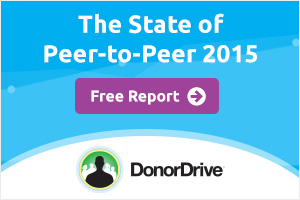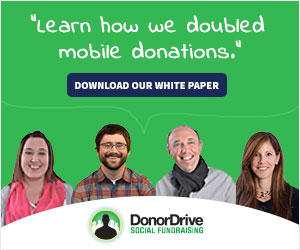
When you work in retail, you hear the words “we’re a results-driven business” probably every day. If it isn’t plastered on the wall in the employee break room, your manager or fellow associates are saying it (sometimes mocking it). The same can be said for any for-profit business. The bottom line: businesses need money to survive. And regardless of their position, associates are directly and indirectly helping the company make money.
A conversation got a little intense a few weeks ago after I watched the 2013 TED Talk given by AIDS Ride Founder Dan Pallotta. In the Talk, Dan discusses how the general population doesn’t want to see nonprofits operating like businesses – no monetary spending on marketing and advertising; the bare minimum in wages; essentially minimal operating costs no matter what.
I told a coworker about my decision to forego participation in the Susan G. Komen Race For the Cure in 2013. For those who are unfamiliar, the Susan G. Komen Race For the Cure is the world’s largest fundraising event for Breast Cancer Research. And it seems I’m not the only one. A notable drop in funds raised (but not a drop in the CEO’s salary) brings me to this conclusion: If donors can’t see results, they’re likely going to take their support (and funds) elsewhere.
While you may interpret “results” for your organization as dollars raised, money isn’t what your supporters care about. Great – your latest fundraising event raised $150 million for cancer research? Wow. That’s a lot of money. What a successful event. Now what? Are we any closer to a cure for cancer? What are these researchers researching? Why, after eight years of donating to your organization did I still have to bury my father after he lost his nine-year battle with multiple myeloma last year?
While Pallotta calls out that people have different expectations for nonprofits, I didn’t find him giving nonprofits anything useful to work with. So here are a few questions I have for your organization – as a Millennial living a life with a tight budget and constantly scrutinizing where I send my money:
What does success look like when it comes to your mission? Most organization mission statements – both for-profit and nonprofit – are convoluted and vague. Using big words in your mission statement doesn’t give me a true, quantifiable idea of what you’re trying to achieve. What is it exactly that you’re trying to do for your cause? How does my support help you drive your bottom line?
Are you exploring every avenue possible to reduce expenses? While Pallotta calls this expectation out in his Talk, I must say that I’m guilty of the occasion cringe when I see financial reports for nonprofits. I don’t think people go into nonprofit work to make money…and those who do are quickly ousted. When a lot of your dollars are contributed by individuals or organizations based on their own free will, and you aren’t providing a good or service, people are going to wonder if you’re working to stretch your dollars. I’m okay with seeing high expenses, but are you using the dollars effectively while still keeping your bottom line at top of mind?
What goals have you set for your organization and how close are you to reaching those? Keep these goals at the top of your supporters’ minds. If your goal is to provide 1 million meals to the hungry in one year, let us know how many you’ve provided already and what it’s going to take to provide the rest. Simply written goals are more attractive to supporters and are more likely to inspire them to open their wallets or offer their time.
 A professional copywriter working with Macy’s Store Communications team, Kadi continues to fulfill her passion for communication by serving as the resident Millennial blogger with Third Sector Today. She also serves on the advisory board for GlamourGals and is the content manager for BLEEP Magazine. She’s a recent transfer to NYC, but calls Ohio home. She graduated with a BS in Magazine Journalism from the E.W. Scripps School of Journalism at Ohio University and spent five years in Ohio’s capital city of Columbus, working as a professional communicator and managing a trade magazine for the insurance industry for three years and working with The Harmony Project as a member and as the social media coordinator. She is a triathlete, loves golf and tennis, and coaches swimming.
A professional copywriter working with Macy’s Store Communications team, Kadi continues to fulfill her passion for communication by serving as the resident Millennial blogger with Third Sector Today. She also serves on the advisory board for GlamourGals and is the content manager for BLEEP Magazine. She’s a recent transfer to NYC, but calls Ohio home. She graduated with a BS in Magazine Journalism from the E.W. Scripps School of Journalism at Ohio University and spent five years in Ohio’s capital city of Columbus, working as a professional communicator and managing a trade magazine for the insurance industry for three years and working with The Harmony Project as a member and as the social media coordinator. She is a triathlete, loves golf and tennis, and coaches swimming.






Pingback: How to Increase Millennial Impact and Engagement - Third Sector Today()